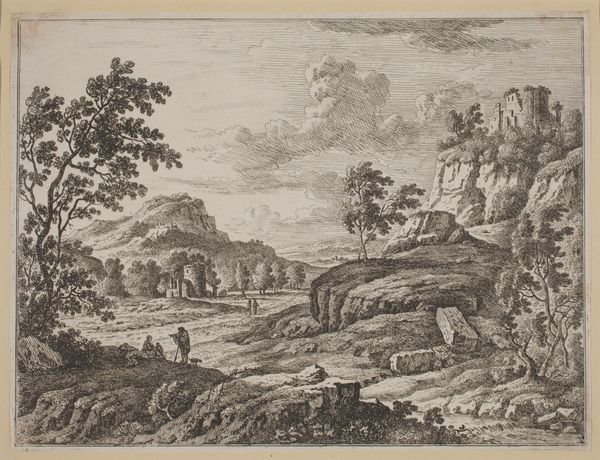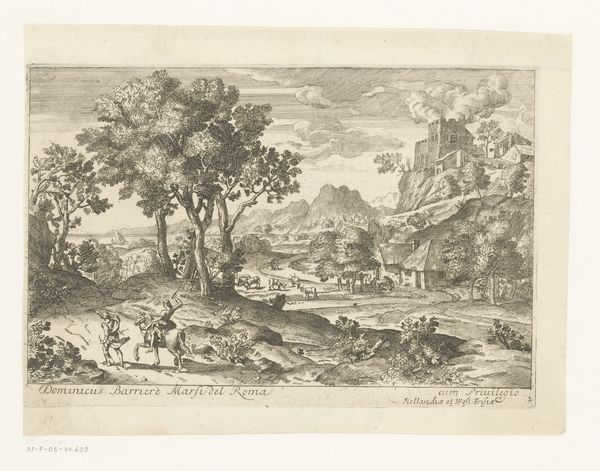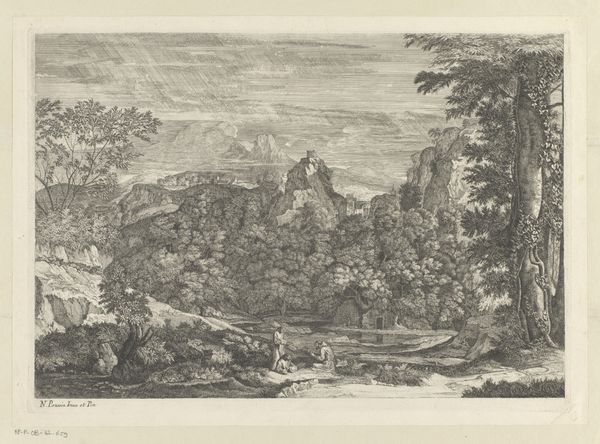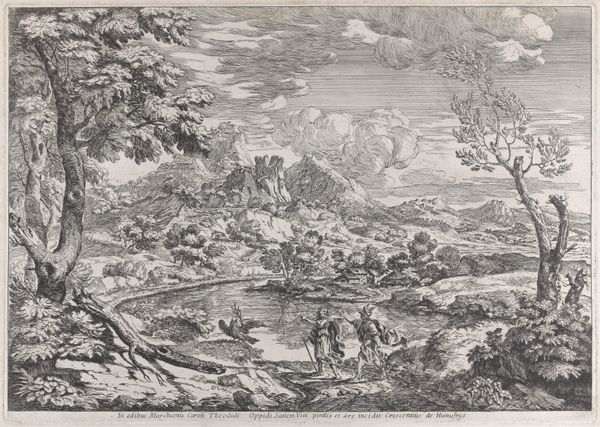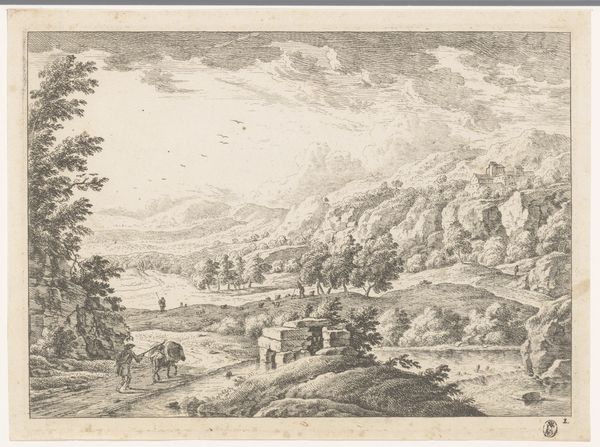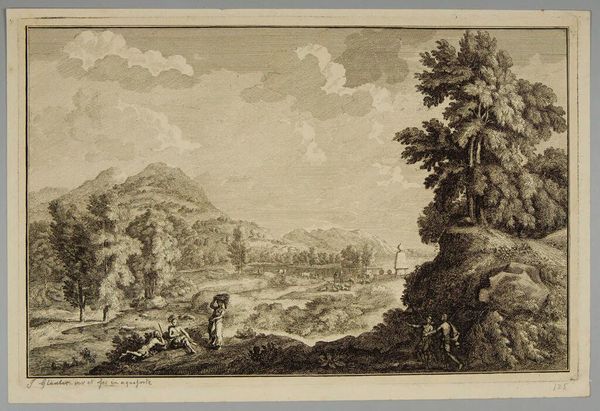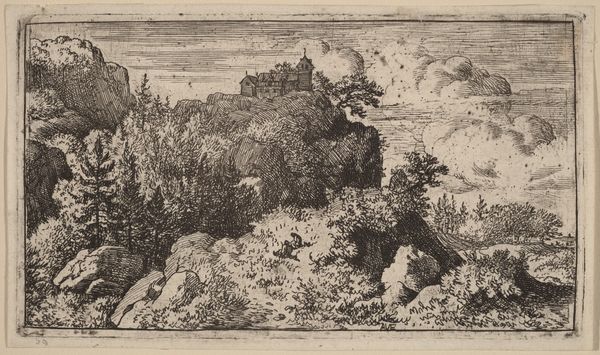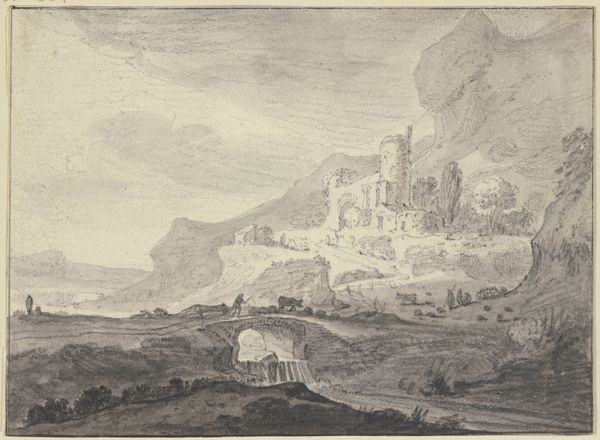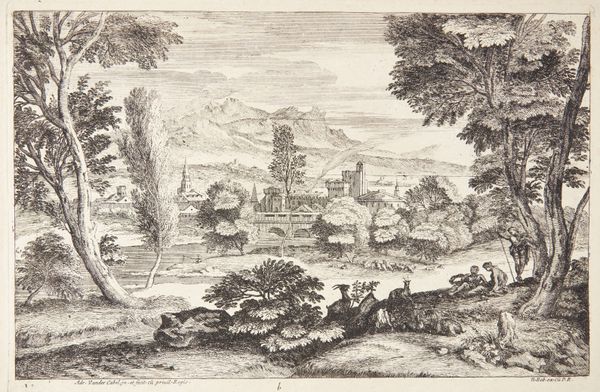
drawing, print, etching, ink
#
drawing
#
ink drawing
#
baroque
#
ink painting
# print
#
etching
#
landscape
#
ink
Dimensions: 209 mm (height) x 322 mm (width) (bladmaal)
Curator: This is "Landscape with Shepherds by a Waterfall" by Albert Meyering, created sometime between 1645 and 1714. It's a print, an etching, made using ink. Editor: My first impression is a stark contrast between the tamed and untamed, like a civilizational balancing act rendered in ink. It feels almost…precarious? Curator: It’s intriguing to consider this image through the lens of material culture. We see evidence of human intervention—shepherds, dwellings—coexisting with the natural drama of a waterfall. Consider the role of paper here, a manufactured product onto which a constructed landscape is transferred, sold, and consumed. This piece reflects a growing market for landscape prints at the time, demonstrating the increasing accessibility of art to the wider public. Editor: I'm drawn to the waterfall itself. Water, historically, has represented purification, change, the relentless passage of time. Combined with the figures of the shepherds – archetypal guardians of simpler lives – it evokes themes of pastoral innocence juxtaposed with the dynamism of the natural world, like an emblem of an era grappling with change. Curator: The etching technique, itself a relatively new technology at the time, enabled a democratisation of image production, allowing for the mass production of these scenes. Furthermore, observe the deliberate texture created using the ink and the print. This layering evokes a sensory feeling to an otherwise pastoral, perhaps idyllic, scene. Editor: Right, the texture does give it a certain vitality. The human figures appear almost secondary, dwarfed by the immensity of the landscape, echoing older symbolic relationships where humanity is subservient to divine nature, captured using a novel method, which then can be distributed widely... interesting paradox! Curator: Absolutely! I appreciate how our separate lenses here highlight the intersections of materials and cultural meanings in this work, how they are mutually constitutive rather than separate concerns. Editor: It certainly does provide a richness to it. Considering those symbolic undertones combined with the tangible, almost gritty materiality, I see it less as precarious now and more as... resonant.
Comments
No comments
Be the first to comment and join the conversation on the ultimate creative platform.
